It’s a blisteringly cold winter’s day on the rural outskirts of Paris and despite the generous width of the Porsche 910’s rear tyres and the cautiously confident right foot of its expert pilot, the ultralight prototype’s relentless quest for purchase is proving fruitless.
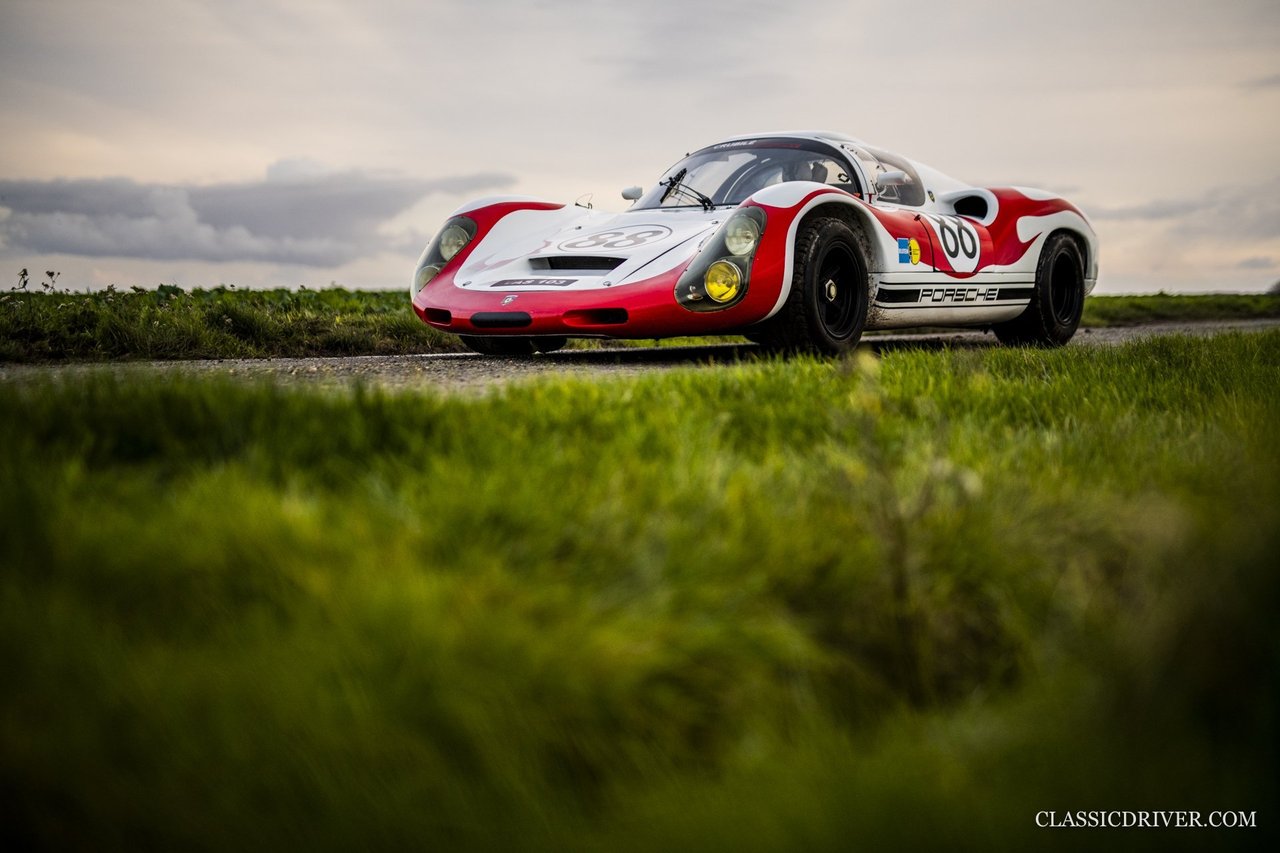

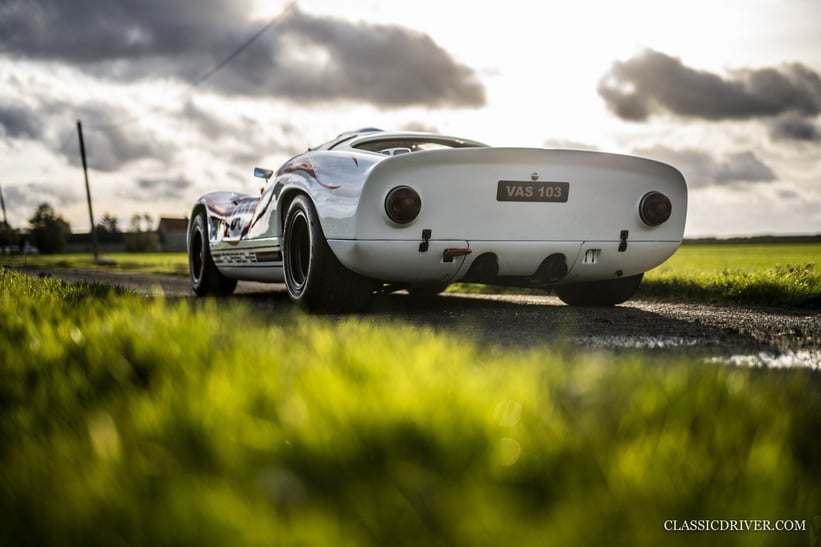
Once the 1960s endurance thoroughbred does finally hook up, however, the guttural flat-six facilitates a smooth, surefooted and symphonic charge that, from the cockpit, is exaggerated tenfold by the open roof and total lack of creature comforts. Even the in-car intercom system, fitted to allow the Porsche’s occupants to communicate with each other more easily during pivotal special stages or long highway spells, ceases to be effective when the car’s at full-tilt.
It’s an experience that batters the senses, and that’s before the spritely and agile road-racer, with its Formula 1-derived wheels and suspension, has been pointed towards a tighter sequence of corners. It’s small wonder that 1960s and ’70s sports car supremos such as Jo Siffert, Hans Herrmann and Gerhard Mitter waxed lyrical about the 910’s progressive handling. It’s just a shame they only got to race the car during the first half of the 1967 season – the extreme rate of development in Zuffenhausen under Ferdinand Piech’s reign was such that by Le Mans in June, the 910 was already playing second fiddle to the new, narrower 907.
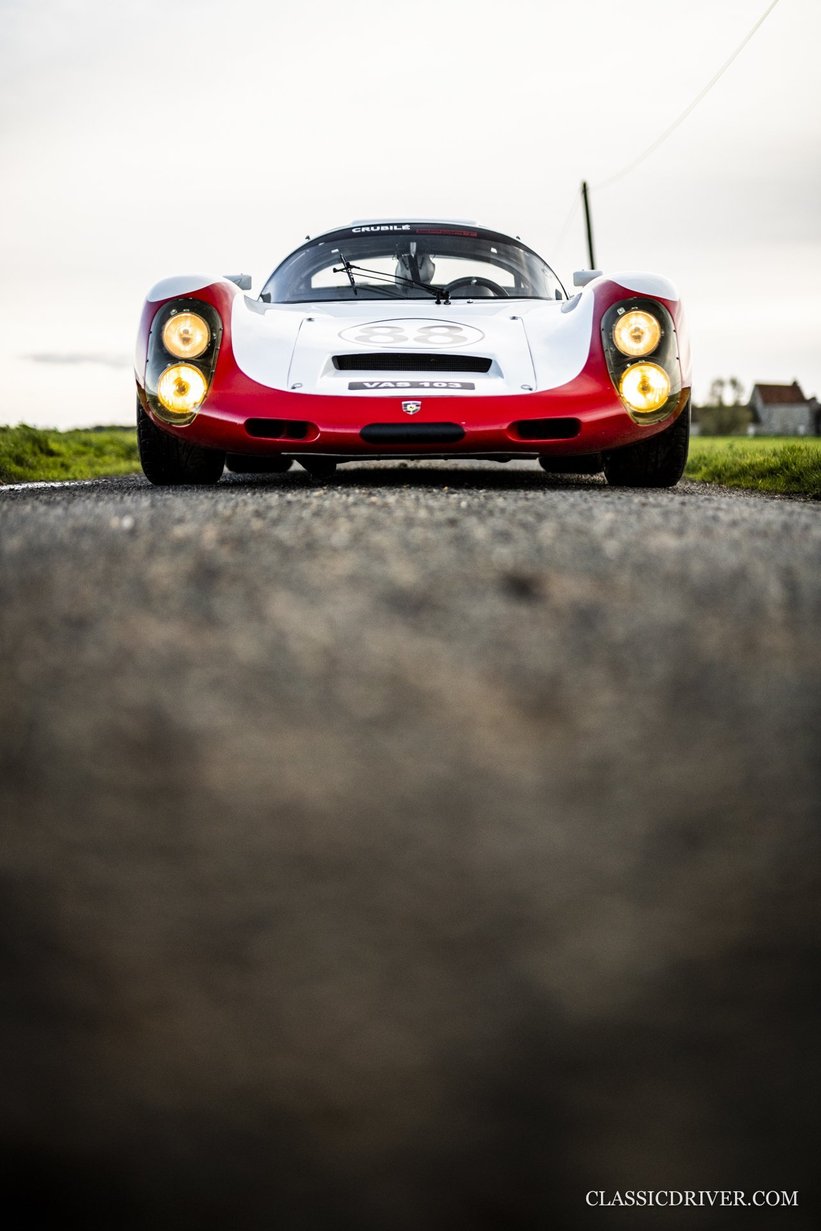

Until then, however, the 910 – which was a more circuit-oriented evolution of the 906, with shades of Porsche’s extreme Ollon-Villars and Bergspyder hill climbers – had scored a number of significant results including an outright win at the Targa Florio and a momentous one-two-three victory at the Nürburgring 1000KMs. The latter was the marque’s first major victory on home soil. But on longer power circuits such as Monza and Spa, and even fitted with the more powerful (if less reliable) eight-cylinder engine fitted, the 910 was outgunned by Ford’s mighty GT40s and Ferrari’s sultry 330 P4s.
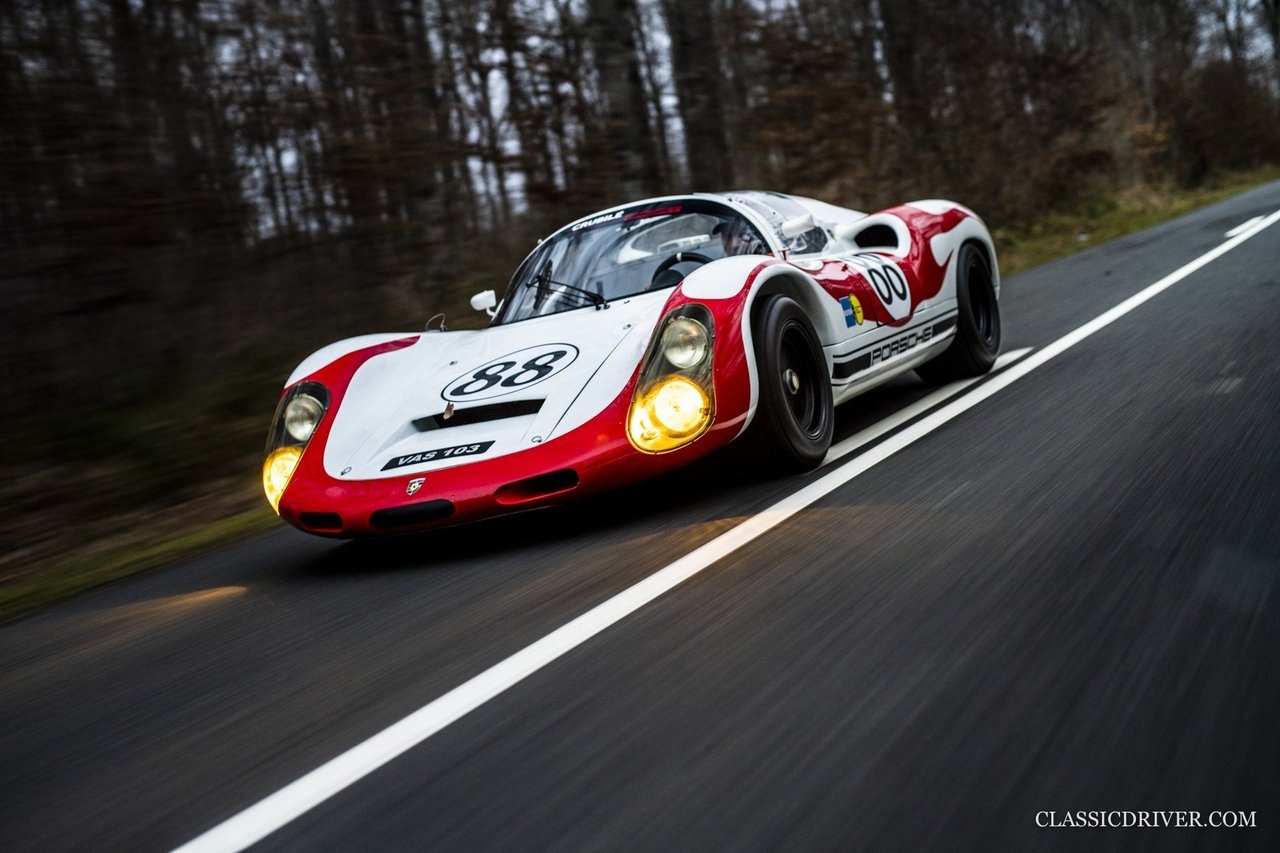
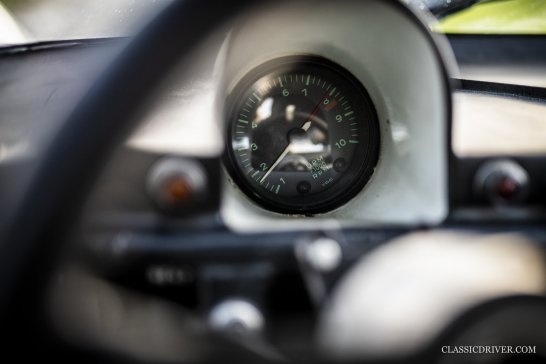

The 910’s short-lived competition career and relatively straightforward design coupled with its somewhat confusing nomenclature and the prominence and dominance of the later 917 mean it’s never really got the recognition it deserves from Porschephiles today. A chance to stretch the legs of this rare and relatively overlooked endurance prototype was thus too good to pass up, even if the mercury has dropped below zero. This particular example is chassis 022. It was one of 27 910s built by Porsche in 1967, though miraculously escaped national service on behalf of the factory, instead serving as a test and development car.
Subsequently, in the hands of the American privateer Edwin G. Abate, it made just two appearances: at Watkins Glen for the star-studded Six Hour and Can-Am race in 1972 and the Daytona 24 Hours early the following year. Alas, both outings ended in retirement. But in its second life as an historic racing car, 022 has proven its versatility at prestigious events as the Tour Auto and Le Mans Classic. It’s painstakingly maintained by Sébastien Crubilé from the renowned Porsche specialist Crubilé Sport and is in rude health, as we’ve had the privilege of experiencing first-hand. Currently fitted with a punchy flat-six, the precious original flat-eight with which is ran in the period is safely kept at Crubilé out of harm’s way.
The first thing that strikes you in the presence of the 910 is its size, or rather lack of – it’s a tiny car. But that’s not to say the bonded glass-fibre body doesn’t command a presence and hold your concentration captive.
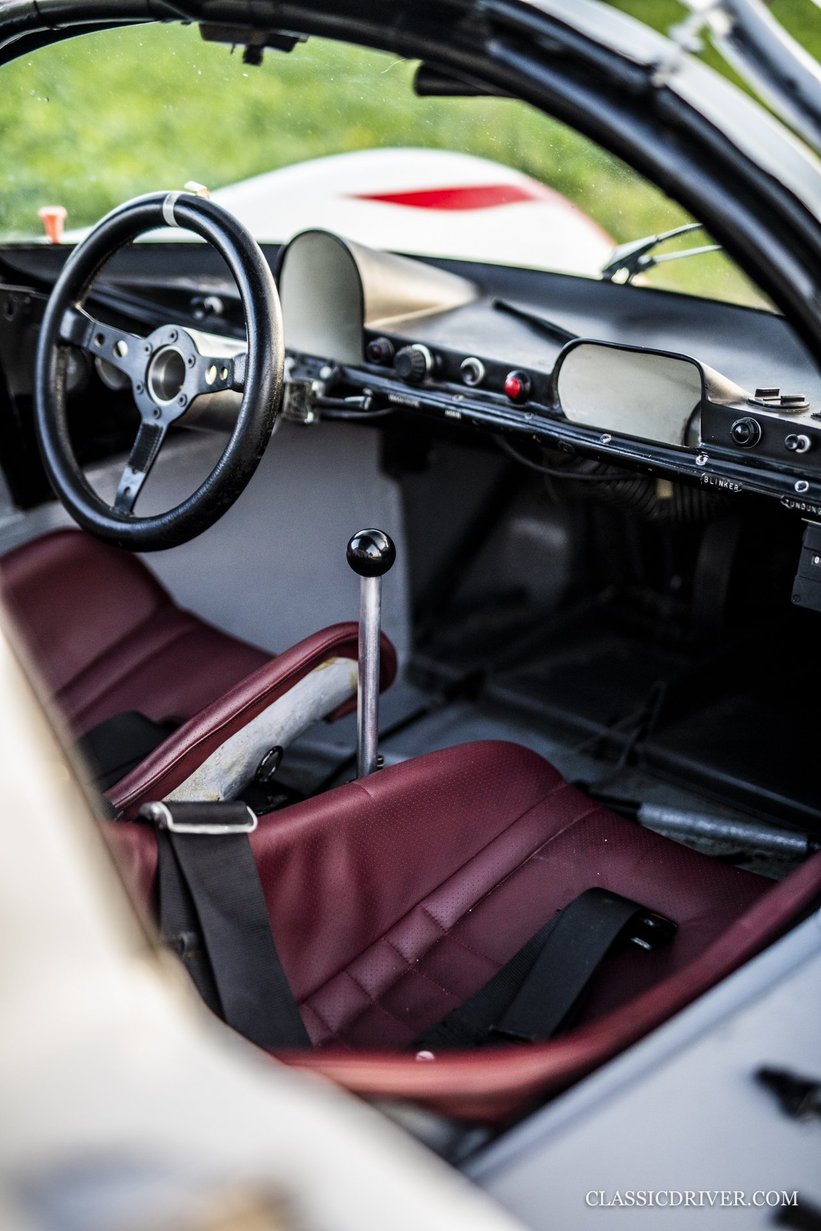
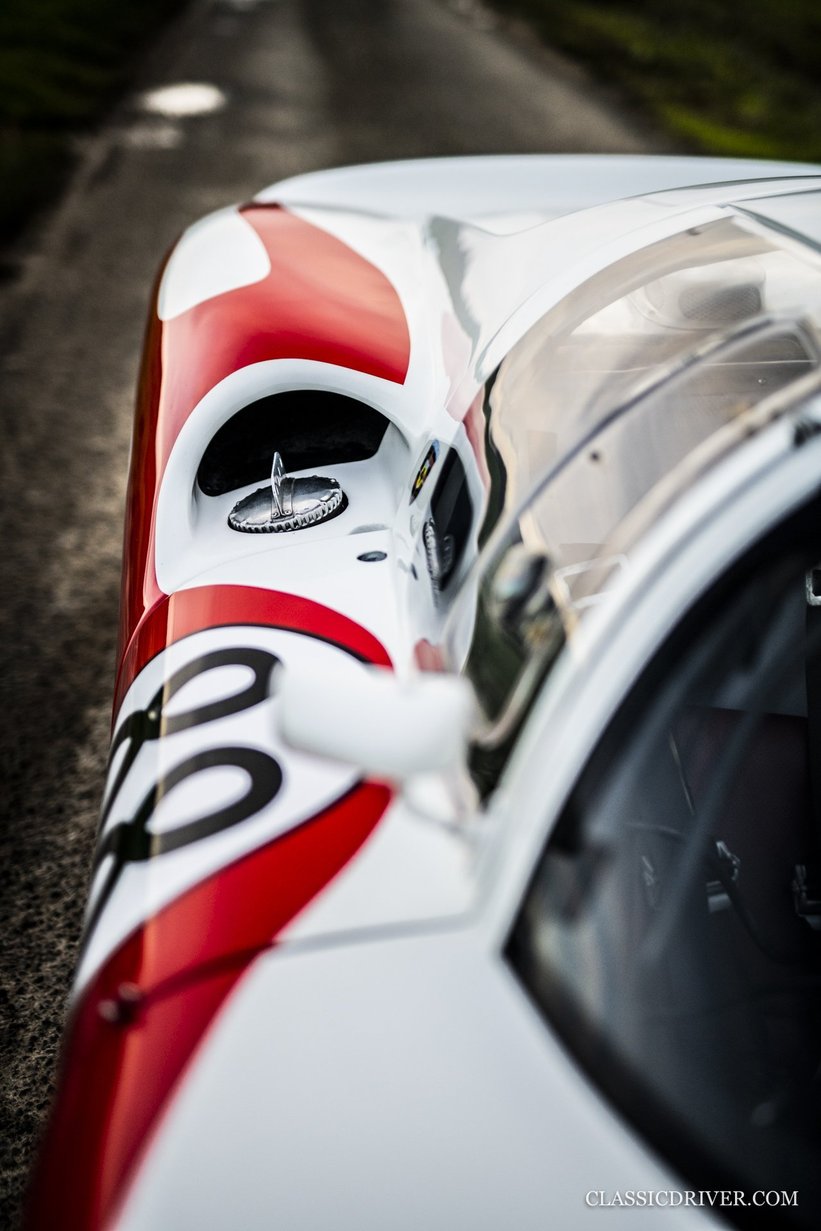
The prominent front lights (in this case pleasingly tinted French yellow) below the perfectly curved front wheel arches dominate the front view while from behind, the truncated tail serves as something of an obstruction and offers only fleeting glimpses of the car’s voluptuous and flaming midriff. Inside there’s not really enough room for two full-sized passengers but, of course, we contort ourselves in and nestle into the diminutive waist-pinching bucket seats. As a side note, how cool are the crudely fashioned German labels for the switchgear?
So, what does our driver Sébastien Crubilé, a man who’s driven virtually every significant Porsche racing car under the sun and has even raced a modern Porsche 911 RSR at Le Mans, make of the 910? “For me, the 910 is one of the greatest Porsches of them all,” he enthusiastically professes. “It’s the perfect compromise between power and weight, which means you feel as comfortable on the racetrack as you do on the road. I’d compare this car with an old pair of sneakers – it’s familiar, comfortable and you know exactly where you are. It’s not a difficult car to drive at all, which means its potential as a historic racing car is huge. What’s more, because the 910 was raced everywhere in the period, it’s eligible for virtually every significant historic meeting today, from the Tour Auto to the Goodwood Revival.”
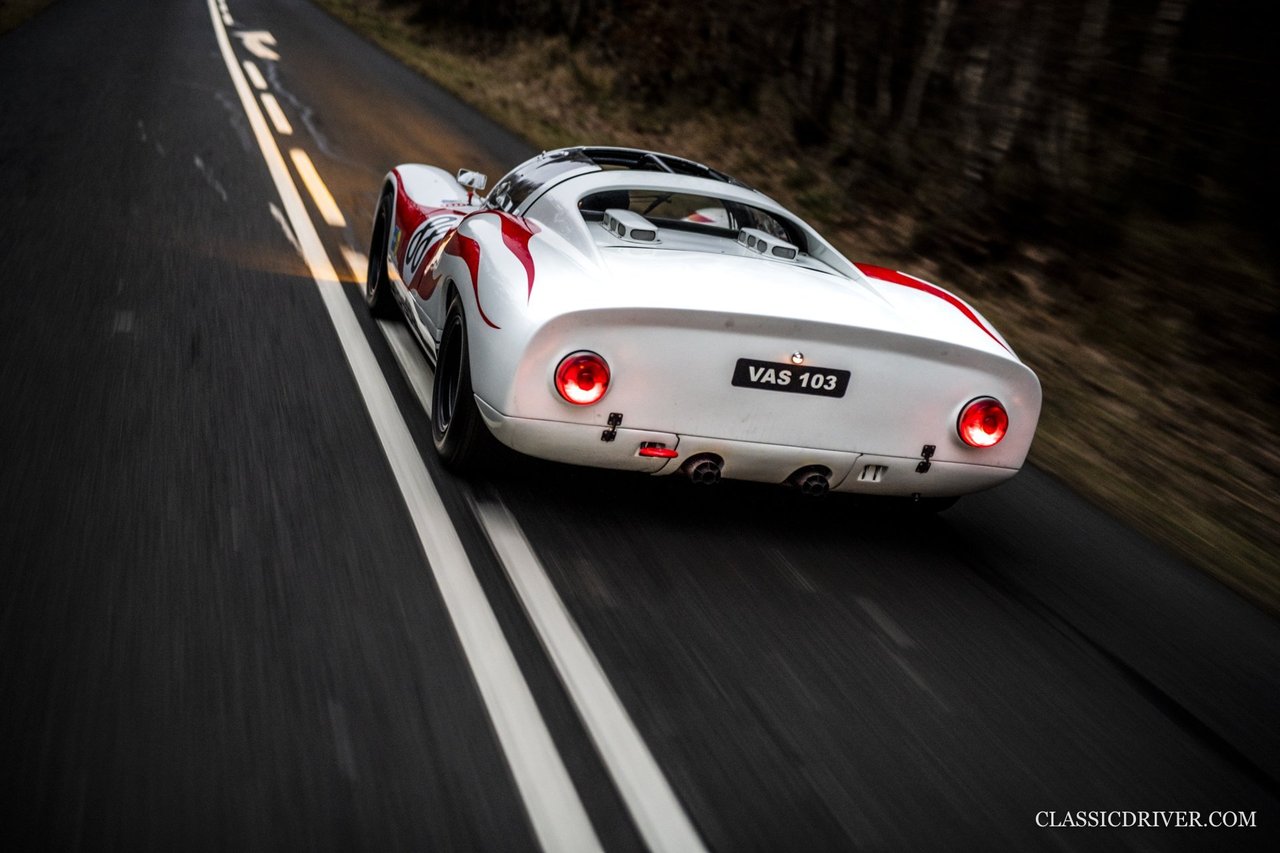
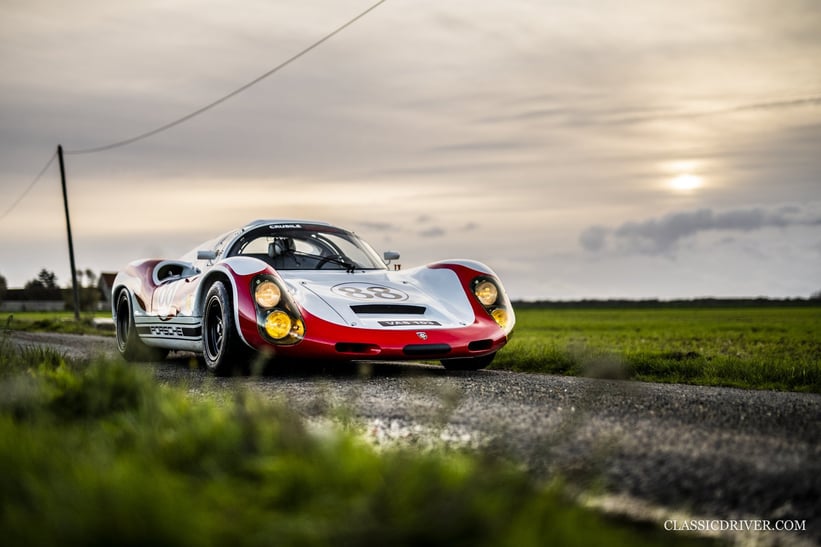
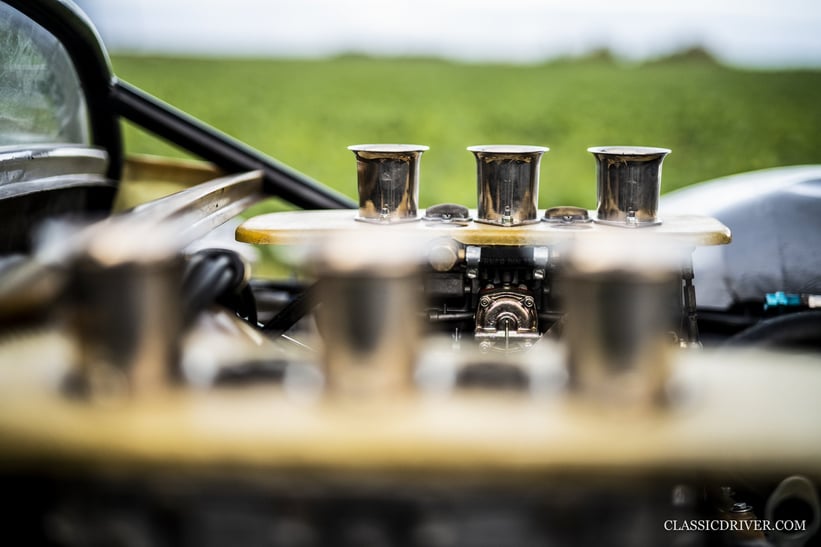
Somewhat frustratingly, our time with the car is cut short by the wintry darkness, which has swept in depressingly early on this overcast afternoon. And while the 910’s yellow headlights are actually pretty bright by 1960s standards, our photographer Rémi Dargegen can do no more so we head back to the Crubilé Sport workshops.
It’s been a frigid yet fascinating encounter with this overlooked Porsche sports prototype. We confess to having been unfamiliar with the intricacies of the 910 beforehand but can now see why its cocktail of attributes, from its versatility to the frenetic rate at which it covers ground, make it the perfect choice for seasoned historic racers. We’ll certainly never forget the feeling from inside the cockpit as Sébastien wound the 910 up further and further – and neither will you if you check out the numerous videos from the passenger seat over on our Instagram channel. Enjoy!
Photos: Rémi Dargegen for Classic Driver © 2019































